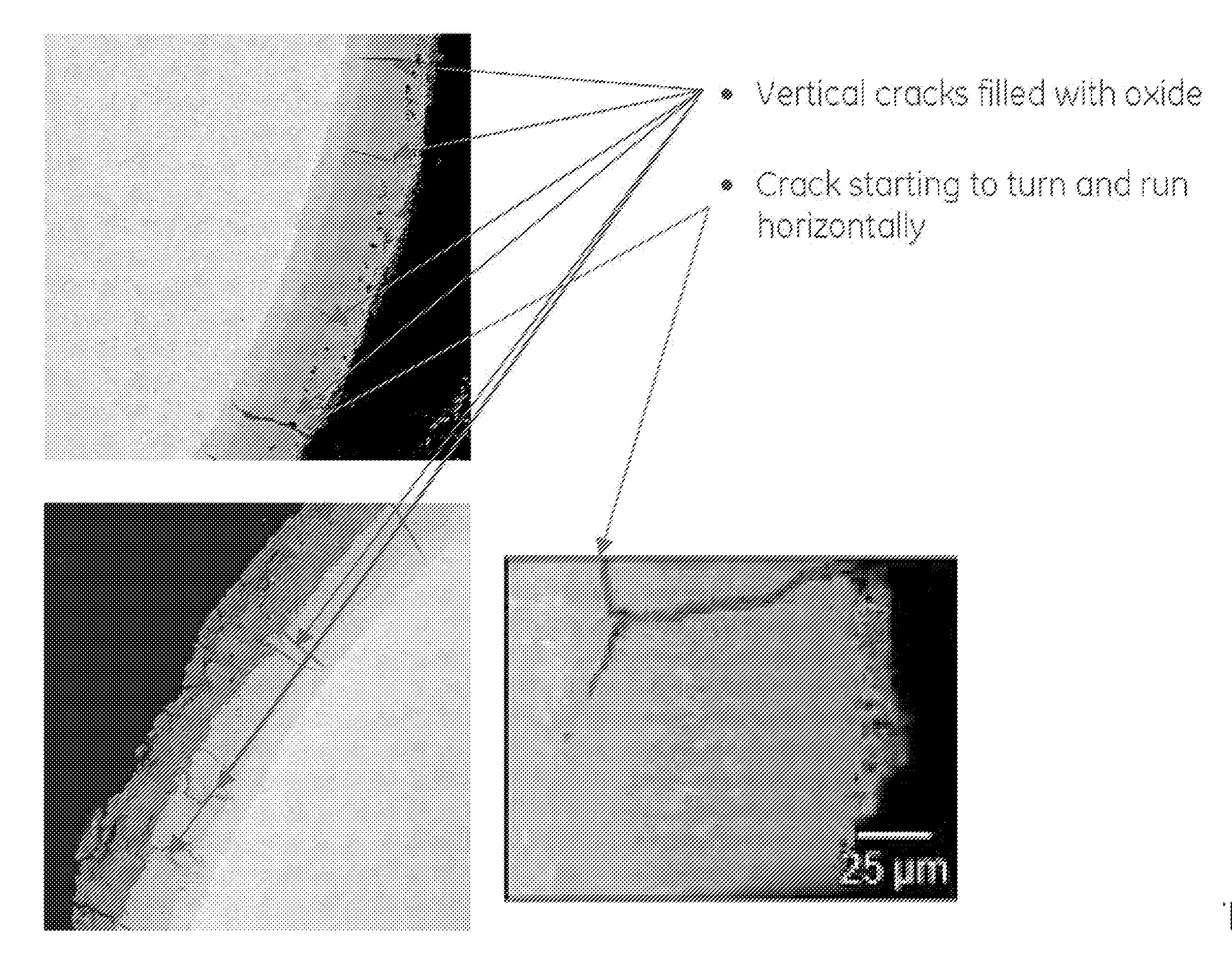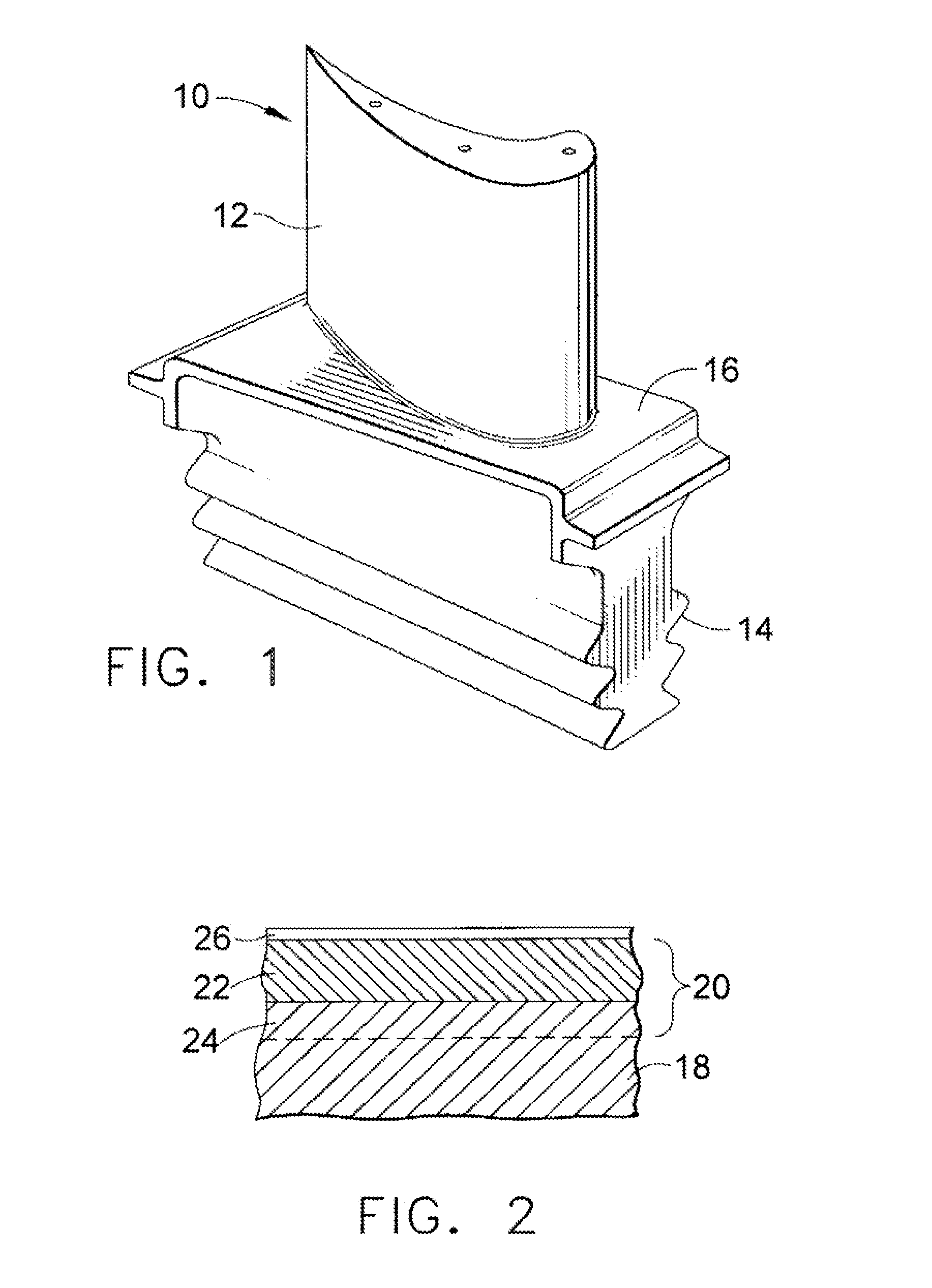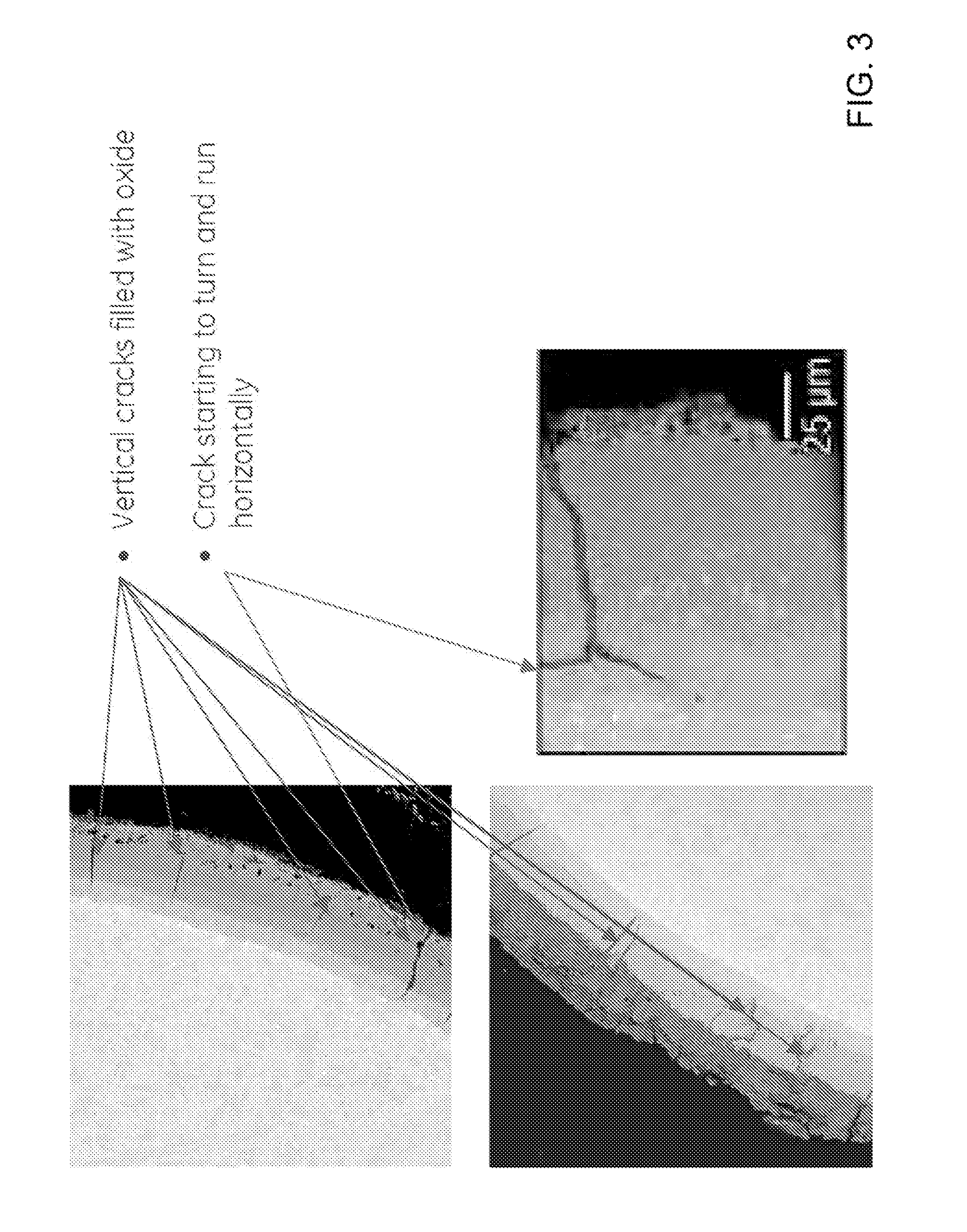Oxide-forming protective coatigns for niobium-based materials
a technology of niobium-based materials and protective coatings, applied in the field of coatings, can solve the problems of inability to meet the requirements of nb-based alloys and rmics, and inability to achieve sustained formation of alumina scale, etc., and achieve the effect of promoting the oxidation resistance of the substra
- Summary
- Abstract
- Description
- Claims
- Application Information
AI Technical Summary
Benefits of technology
Problems solved by technology
Method used
Image
Examples
Embodiment Construction
[0022]The present invention is generally applicable to components that operate within environments characterized by relatively high temperatures and subjected to severe oxidation. Notable examples of such components include blades, nozzles, vanes, shrouds, afterburner components, and other components within the hot gas flow path of gas turbine engines. One such example is the high pressure turbine blade 10 shown in FIG. 1. The blade 10, which is typically in the form of a casting, generally includes an airfoil 12 against which hot combustion gases are directed during operation of the gas turbine engine, and whose surface is therefore subjected to severe attack by oxidation, corrosion and erosion. A platform 16 separates the airfoil 12 from a dovetail 14 formed on a root section of the blade 10, by which the airfoil 12 is anchored to a turbine disk (not shown). While the advantages of this invention will be described with reference to the turbine blade 10 shown in FIG. 1, the teachin...
PUM
| Property | Measurement | Unit |
|---|---|---|
| oxidation resistance | aaaaa | aaaaa |
| composition | aaaaa | aaaaa |
| temperature | aaaaa | aaaaa |
Abstract
Description
Claims
Application Information
 Login to View More
Login to View More - R&D
- Intellectual Property
- Life Sciences
- Materials
- Tech Scout
- Unparalleled Data Quality
- Higher Quality Content
- 60% Fewer Hallucinations
Browse by: Latest US Patents, China's latest patents, Technical Efficacy Thesaurus, Application Domain, Technology Topic, Popular Technical Reports.
© 2025 PatSnap. All rights reserved.Legal|Privacy policy|Modern Slavery Act Transparency Statement|Sitemap|About US| Contact US: help@patsnap.com



